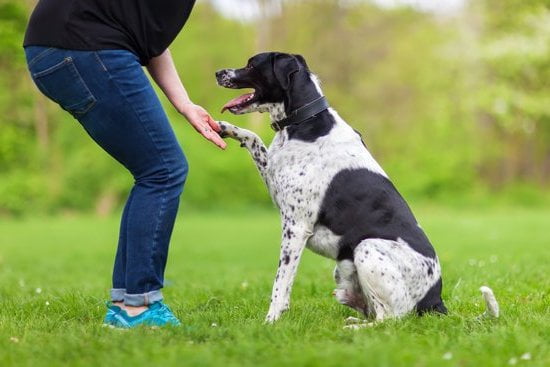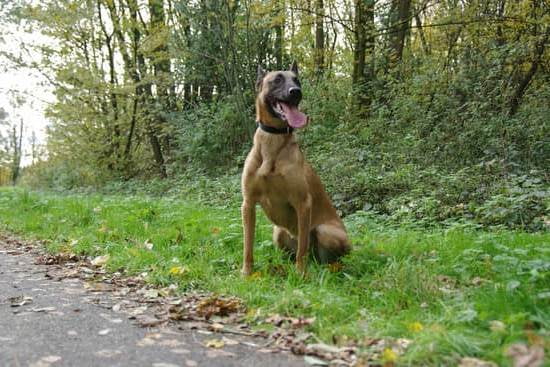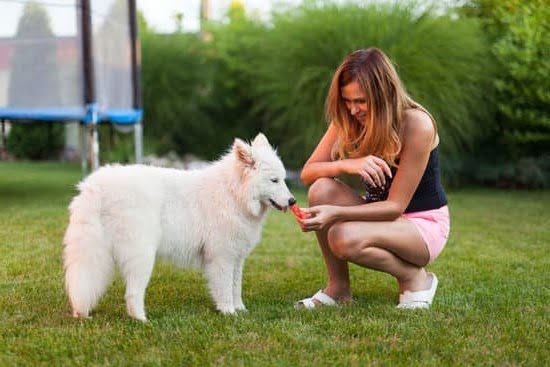is a common concern among dog owners who are seeking to establish a consistent and convenient routine for their four-legged friends. In this article, we will explore the importance of potty training for dogs, understand their natural instincts and behaviors when it comes to pooping, and provide actionable steps and tips to effectively train your dog to poop in one designated area.
Potty training is an essential aspect of responsible pet ownership, as it not only maintains cleanliness in the home but also establishes a sense of routine and discipline for your furry companion. Understanding the challenges of training a dog to poop in one place requires insight into your pet’s behavior and instincts, as well as patience and consistency in implementing effective training methods.
By understanding your dog’s natural instincts and behavior when it comes to pooping, you can tailor your approach to potty training based on their individual needs. With the right tools, resources, and guidance, you can successfully teach your dog to relieve themselves in a designated area, providing convenience for both you and your pet. Stay tuned as we delve into the step-by-step process of potty training for dogs and address common mistakes to avoid along the way.
The Importance of Potty Training for Dogs and Its Benefits
Potty training is an essential aspect of owning a dog, and it plays a significant role in creating a harmonious and clean living environment for both you and your pet. Without proper potty training, your dog may end up relieving themselves in various areas of your home, leading to unpleasant odors, stains, and unhygienic conditions. However, with the right training, you can effectively teach your dog to poop in one designated area.
One of the main benefits of potty training for dogs is the establishment of a routine. By training your dog to poop in the same spot every time, you can create a sense of predictability and consistency for both you and your pet.
This routine can help minimize accidents and messes around your home, making it easier to maintain cleanliness. Additionally, potty training can also strengthen the bond between you and your dog as it requires patience, understanding, and positive reinforcement.
Understanding your dog’s natural instincts when it comes to pooping is crucial in successfully potty training them. Dogs are territorial animals by nature, so they instinctively seek out specific spots to relieve themselves.
By recognizing this behavior and using it to your advantage, you can train your dog to consistently use a designated area for pooping. Consistency with potty breaks and positive reinforcement when they use the designated spot are key factors in effectively teaching your dog where to go.
| Benefit | Explanation |
|---|---|
| Establishment of Routine | Potty training creates a sense of predictability and consistency for both owner and pet. |
| Bond Strengthening | Potty training requires patience, understanding, and positive reinforcement which can strengthen the bond between owner and pet. |
Understanding Your Dog’s Natural Instincts and Behavior When It Comes to Pooping
Instinctual Behavior
Dogs have an instinctual need to mark their territory, including when they relieve themselves. This can often lead to dogs wanting to poop in various places around their living space. Understanding this instinctual behavior will help you in training your dog to focus on one specific area for bathroom breaks.
Routine and Consistency
Many dogs develop a routine when it comes to pooping, such as after meals or first thing in the morning. By recognizing and understanding your dog’s routine, you can anticipate when they will need to poop and guide them towards the designated potty area. Consistency in guiding them to this spot each time they need to go is key in reinforcing the behavior.
Body Language Cues
Another important aspect of understanding your dog’s behavior when it comes to pooping is recognizing their body language cues. Dogs often display signs that they need to relieve themselves, such as sniffing around or circling a certain spot. By being aware of these cues, you can proactively guide them to the designated potty area before accidents happen elsewhere in the house.
Overall, understanding your dog’s natural instincts and behaviors when it comes to pooping is essential in successfully training them to use one designated spot for bathroom breaks. By recognizing their routines, body language cues, and instinctual behaviors, you can tailor your training methods accordingly and set up both you and your canine companion for success.
Steps to Effectively Train Your Dog to Poop in One Designated Area
Training your dog to poop in one designated area can take time and patience, but with the right approach, it is definitely achievable. Here are some steps you can follow to effectively train your dog to do their business in a specific spot:
1. Choose the designated area: Pick a spot in your yard or outdoor space where you want your dog to go potty. This could be a corner of the yard or a specific patch of grass. Make sure it is an area that is easily accessible to your dog.
2. Establish a routine: Dogs thrive on routine, so taking them out to the designated potty area at the same times every day can help them understand where they are supposed to go. This could be first thing in the morning, after meals, and before bedtime.
3. Use positive reinforcement: When your dog goes potty in the designated area, be sure to praise and reward them. This could be with treats, verbal praise, or extra playtime. Positive reinforcement can help reinforce good behavior and encourage your dog to continue using the designated spot.
4. Be consistent: Consistency is key when it comes to training your dog to poop in one place. If you catch your dog starting to go potty in a different area, gently redirect them to the designated spot.
Remember, every dog is different, so it may take some trial and error to find the right approach that works for your furry friend. With patience and consistency, you can successfully train your dog to poop in one place.
Tools and Resources to Aid in Potty Training for Dogs
Choosing the Right Potty Area
When it comes to potty training your dog to poop in one place, it’s important to choose the right designated area. This area should be easily accessible to your dog, but also separate from their living and eating areas.
Consider using a specific corner of your yard, a designated patch of grass, or even a litter box for smaller breeds. The key is to choose an area that is convenient for both you and your dog, and that can be easily maintained.
Use of Training Aids
In some cases, using training aids can be beneficial in teaching your dog where to poop. For example, you can use pee pads or fake grass mats specifically designed for dogs to help encourage them to go in the designated spot. You may also want to consider using scent markers or pheromone sprays to attract your dog to the chosen potty area. These aids can be especially helpful for puppies or dogs who are struggling with traditional potty training methods.
Consistent Routine and Reinforcement
In addition to physical tools, establishing a consistent routine and providing positive reinforcement are crucial aspects of aiding in potty training for dogs. Take your dog out at the same times each day, such as after meals or before bedtime, and consistently bring them to the designated potty area.
When they successfully go in the correct spot, be sure to offer plenty of praise and maybe even a treat as a reward. This will help reinforce the behavior and encourage them to continue pooping in one place.
Overall, while tools and resources can certainly assist in potty training for dogs, it’s important to remember that consistency and patience are also key factors in effectively training your dog to poop in one place. By combining these elements with understanding your dog’s natural instincts and behavior around pooping (as discussed earlier), you can train your dog to poop in one place.
Common Mistakes to Avoid When Potty Training Your Dog
Potty training your dog can be a challenging task, but it is not impossible. One of the most common questions that dog owners ask is, “Can I train my dog to poop in one place?” The answer is yes, you can train your dog to do their business in one designated area, but it requires time, patience, and consistency.
One of the most important things to keep in mind when potty training your dog is to avoid punishing them for accidents. Dogs do not respond well to punishment and it can actually hinder their progress in learning where they are supposed to go. Instead, focus on positive reinforcement and rewards when they successfully poop in the designated area. This will help them associate that spot with a positive outcome.
Another common mistake that dog owners make when potty training their dogs is not being consistent with their approach. Consistency is key when it comes to any type of training, including potty training. Make sure to take your dog out at the same times every day, and give them ample opportunities to go potty in the designated area.
Lastly, it’s important to avoid giving up too soon. Potty training takes time and some dogs may take longer than others to grasp the concept of going in one place. Be patient with your furry friend and continue to provide them with guidance and positive reinforcement.
| Common Mistakes | Recommendation |
|---|---|
| Punishing for accidents | Focus on positive reinforcement and rewards |
| Lack of consistency | Take your dog out at the same times every day |
| Giving up too soon | Be patient and continue providing guidance |
Consistency and Patience
Training your dog to poop in one place can be a challenging task, but with consistency and patience, it is achievable. Dogs thrive on routine and structure, so establishing a consistent potty training schedule is crucial. Here are some key factors in successfully training your dog to poop in one place:
1. Establish a routine: One of the most important factors in potty training your dog is to establish a consistent routine. Take your dog out to the designated area at the same times every day, such as first thing in the morning, after meals, and before bedtime. This helps your dog understand when it’s time to go potty and reduces accidents in the house.
2. Use positive reinforcement: When your dog successfully poops in the designated area, be sure to praise and reward them with treats or verbal praise. Positive reinforcement encourages good behavior and reinforces the idea that pooping in that specific spot is desirable.
3. Be patient: Potty training takes time, so it’s important to be patient with your dog. Understand that accidents will happen, especially during the early stages of training. Avoid scolding or punishing your dog for accidents, as this can create fear and anxiety around potty training.
Consistency and patience are essential when it comes to successfully training your dog to poop in one place. By establishing a routine, using positive reinforcement, and being patient with your furry friend, you can effectively teach them where to do their business.
Troubleshooting
If your dog is not responding to the potty training methods, it can be frustrating and discouraging. However, there are several troubleshooting steps you can take to address this issue and improve the effectiveness of your training.
First, it’s important to reassess your training methods and make sure you are being consistent with them. Make sure that you are taking your dog to the designated potty area at the same times every day and using the same verbal cues or commands. Inconsistency or constantly changing the rules can confuse your dog and make it harder for them to understand what is expected of them.
Another factor to consider is whether there have been any recent changes in your dog’s environment or routine that could be causing stress or anxiety. Dogs can have difficulty adjusting to changes, so if there have been any disruptions in their usual schedule or living situation, this could be affecting their ability to follow the potty training guidelines.
It’s also important to ensure that you are providing positive reinforcement when your dog does successfully poop in the designated area. Using treats, praise, and rewards can help motivate your dog to continue with their good behavior. However, avoid punishing your dog for accidents as this can create fear and confusion rather than encouraging positive behavior.
Conclusion
In conclusion, training your dog to poop in one place can be a challenging task, but the benefits are well worth the effort. Potty training is essential for both you and your pet’s comfort and hygiene. By designating a specific area for your dog to relieve itself, you not only keep your living space clean and odor-free but also provide a sense of security and routine for your furry friend.
Understanding your dog’s natural instincts and behavior when it comes to pooping is crucial in successfully training them. It’s important to be patient, consistent, and positive throughout the training process. Using tools such as treats, praise, and a designated potty area can help reinforce good behavior in your dog.
Ultimately, the satisfaction of successfully training your dog to poop in one place brings about a sense of accomplishment and strengthens the bond between you and your pet. The benefits of potty training extend beyond just cleanliness – it demonstrates effective communication with your pet, promotes their well-being, and creates a harmonious living environment for both you and your furry companion. So yes, with patience, consistency, and the right approach, you can train your dog to poop in one place.
Frequently Asked Questions
How Do I Get My Dog to Poop in One Area?
To get your dog to poop in one area, you can start by taking them to that specific spot every time they need to go. Use a consistent command and reward system to encourage them to use that designated area.
Can You Train Dogs Where to Poop?
Yes, you can definitely train dogs where to poop. It requires consistency, positive reinforcement, and patience. By consistently guiding them to the designated area and rewarding them for using it, they can learn where it’s appropriate to relieve themselves.
Can You Control Where Your Dog Poops?
While you can influence and guide your dog on where to poop, complete control may not always be possible. Factors such as their individual preferences, health issues, or sudden changes in routine can affect their bathroom habits. However, consistent training and routine can help establish a preferred area for them to do their business.

Welcome to the blog! I am a professional dog trainer and have been working with dogs for many years. In this blog, I will be discussing various topics related to dog training, including tips, tricks, and advice. I hope you find this information helpful and informative. Thanks for reading!





